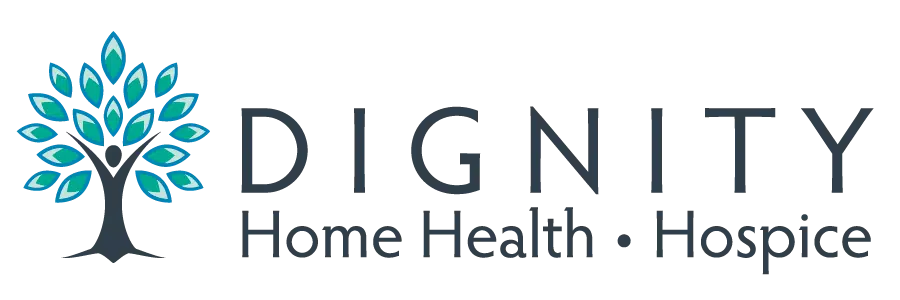Types of Strokes
A stroke occurs when a blood vessel carrying oxygen to the brain ruptures or is blocked by a clot. When the stroke happens, a section of the brain cannot receive the blood and oxygen needed to properly function, so damage to the brain occurs. Individuals who have experienced a stroke often lose the ability to control certain functions, such as muscle control and memory loss. Strokes are classified into two main types: hemorrhagic strokes and ischemic strokes.
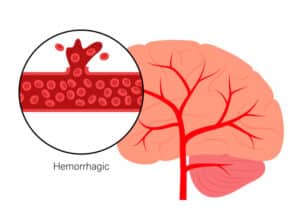
Hemorrhagic Strokes
Hemorrhagic strokes happen when a blood vessel that supplies the brain with oxygen ruptures and bleeds. This causes damage in several areas; when the artery bleeds into the brain, the brain issue and cells do not receive the necessary oxygen and nutrients. The bleed in the brain causes pressure to build up, causing irritation and swelling, leading to further brain damage. This type of stroke is not as common as ischemic strokes.
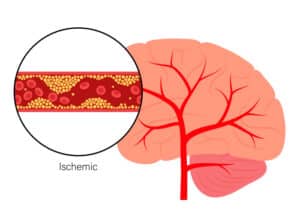
Ischemic Strokes
This type of stroke occurs when a blood vessel leading to the brain becomes clogged, impairing blood flow to a specific area in the brain. Within a few minutes of the stroke, brain cells and tissues begin to die. This is the most common type of stroke, with about 87% of all strokes being ischemic.
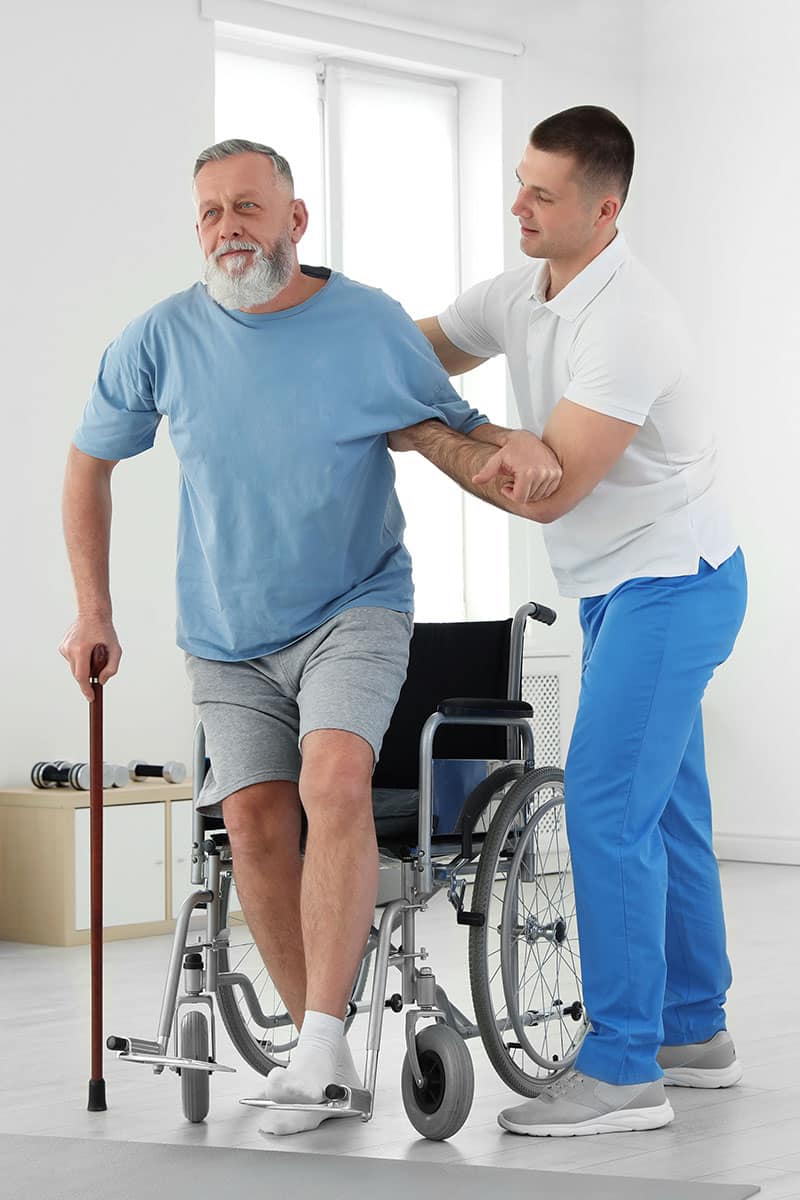
Stroke Recovery Hospice Care
Stroke Rehabilitation That Comes to You
After a stroke, a patient needs time, attentive care, and lots of patience to recover.
Our skilled care team meets your parent or loved one in the comfort of familiar surroundings, whether in their home or in a nursing facility where your loved one may be living. In addition to skilled nursing support, home health aid care, and assistance with daily living tasks, we provide the specialized care of occupational therapists and speech therapists, too. Our therapists offer routine, one-on-one support to promote a quicker and more comprehensive recovery for both body and mind.
Our in-home stroke rehabilitation services tailor a recovery plan to your loved one’s specific needs. Because a stroke affects each person differently, a recovery plan must adapt with the patient’s changing needs. For example, your loved one may face any or all of these issues following a stroke:
- One-sided partial or full body paralysis
- Trouble speaking or a loss of speech
- Arm or leg muscle weakness
- Partial or full face paralysis
What to Expect After a Stroke
While some individuals recover from a stroke, some do not. For those who do not fully recover, stroke hospice care is an appropriate solution to help them live at home and remain comfortable while still receiving quality care. Stroke care services, or home hospice after strokes, aim to improve the patient’s overall quality of life by easing any suffering.
The services provided to those who have suffered from a stroke can vary based on the individual and their needs. First, an assessment is performed to determine the needs of the patient. Then, we implement a personalized home hospice plan. Here are a few of the home hospice services we offer for those who have suffered a stroke:
Emotional Support and Guidance
Experiencing a stroke can be unsettling to the patient and the family. After the stroke, many patients suffer from psychological imbalances. Home hospice helps to provide thorough, individualized care from qualified professionals to ease any suffering. We strive to offer guidance through these challenging times.
Pain Management
Unfortunately, increased pain is a common symptom that many patients experience after a stroke. One of the most important elements of home hospice care is providing patients relief from pain and many other symptoms stemming from the stroke. Pain management helps improve the quality of life of the patient and the family.
Care Plan Coordination
Care plan coordination includes working with every party involved to ensure that a detailed plan has been established to help the stroke victim receive adequate care. The care plan includes keeping all parties informed of any treatments, documenting all necessary medications and medical supplies, coordinating all required supplies, and administering materials.
Bowel and Catheter Care
Those who have suffered a stroke typically have mobility issues and cannot use the toilet. In some cases, a doctor will recommend bladder and catheter care to assist with fluid monitoring and make it easier for the patient to relieve themselves.
Health Assessments
One part of a home hospice service is health assessments to determine how the loved one is doing. The home hospice staff performs health assessments, and any information gathered is relayed to the patient’s healthcare staff and family.
Infusion Therapy
Infusion therapy is an alternative oral treatment that involves administering drugs through a sterile catheter or needle. The catheter is typically inserted into a patient’s vein and secured by a professional healthcare provider. Infusion therapy is ideal for stroke patients who have lost the ability to swallow and need to take medicine another way.
Tube Feeding
Tube feeding, also known as artificial nutrition and hydration, is offered to those unable to swallow foods and liquids without choking. Nutrition is delivered through a tube surgically inserted into the body, which bypasses the normal digestive process that starts in the mouth. Tube feeding is helpful for those recovering from a stroke and can even eventually restore the ability to swallow.
Other home hospice services we offer to stroke patients:
- Hospital aftercare
- Certified wound care
- Rehabilitation therapy
- Speech and occupational therapy
- Other skilled nursing ordered
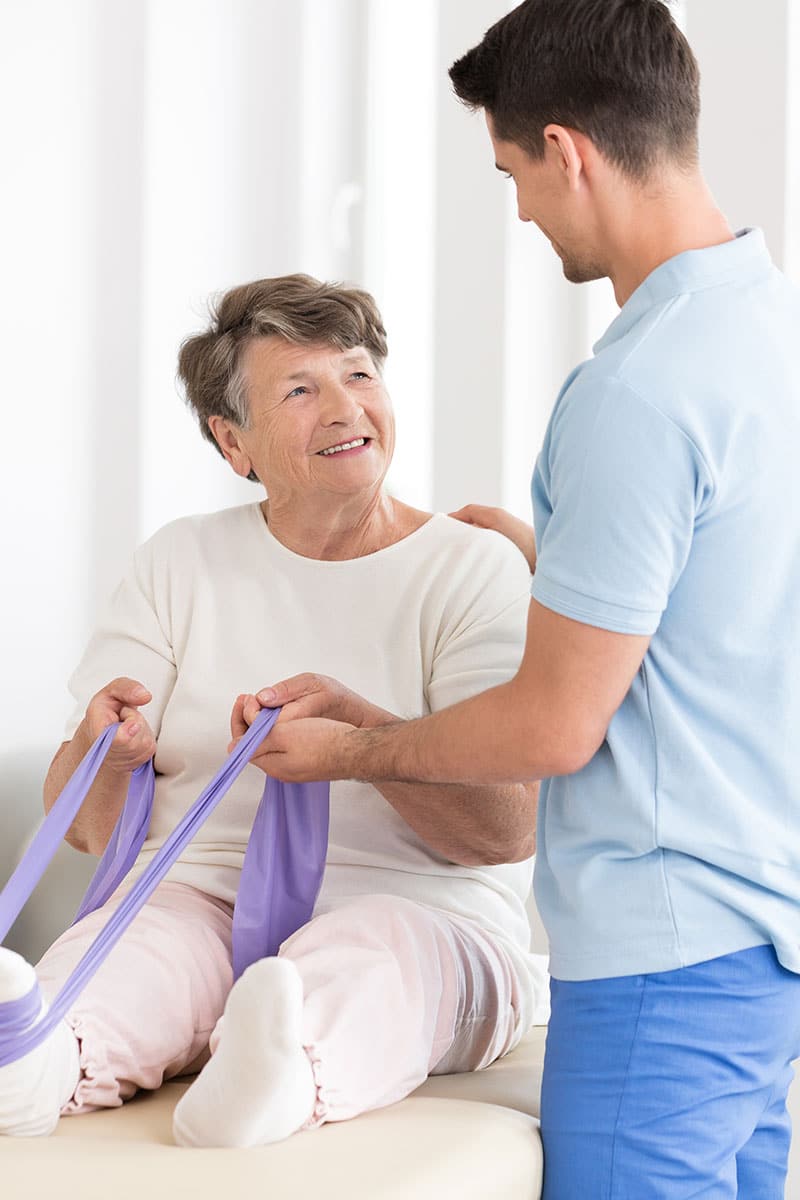
How to Determine if Stroke Hospice Care is Right for Your Loved One
While many patients will be able to seek recovery after a stroke, some individuals will require home hospice to support them in the final weeks or months of life. If your loved one has recently suffered a stroke and you’re not sure if they need help at home, here are some of the criteria for hospice support:
- Impaired functional status
- Mostly chair or bed-bound
- Changes in orientation status
- Progressive weight loss
- Unable to maintain caloric or fluid intake
- Requires assistance for many daily activities
- Needs health monitoring or assistance with medication
As a child or family member, you don’t have to determine the right medical support for your loved one alone. Our team is here to offer a careful assessment and provide our experienced perspective on your specific situation. Please give us a call so we can help you understand the right type of care at this moment.
Paying for Stroke Patient Care
Those who have experienced a stroke and meet the required criteria usually have their home hospice or rehabilitation covered by Medicare, Medicaid, and private insurance. It’s important to know that when a patient is approved for hospice, those services are always covered in full by Medicare.
Contact Dignity Home Health & Hospice, and we can assist you with all billing-related questions. We’ll take care of all the billing and paperwork so you can get back to taking care of your loved one.
Because we focus on providing skilled nursing care first and foremost, most of our patients are covered entirely by Medicare or Medicaid and pay nothing out-of-pocket. However, we do accept many different insurances aside from Medicare/Medicaid, including the following:
- Aetna
- Aetna Advantra
- Altius/Coventry Network
- Blue Cross Blue Shield
- BCBS Med Advantage
- Healthy U
- Molina Medicaid
- Molina Medicare
- Select Health Community Care
- TriWest/VA
- United Healthcare MedAdvantage PPO
- U of U Health Plans
- Veteran’s Health Administration

